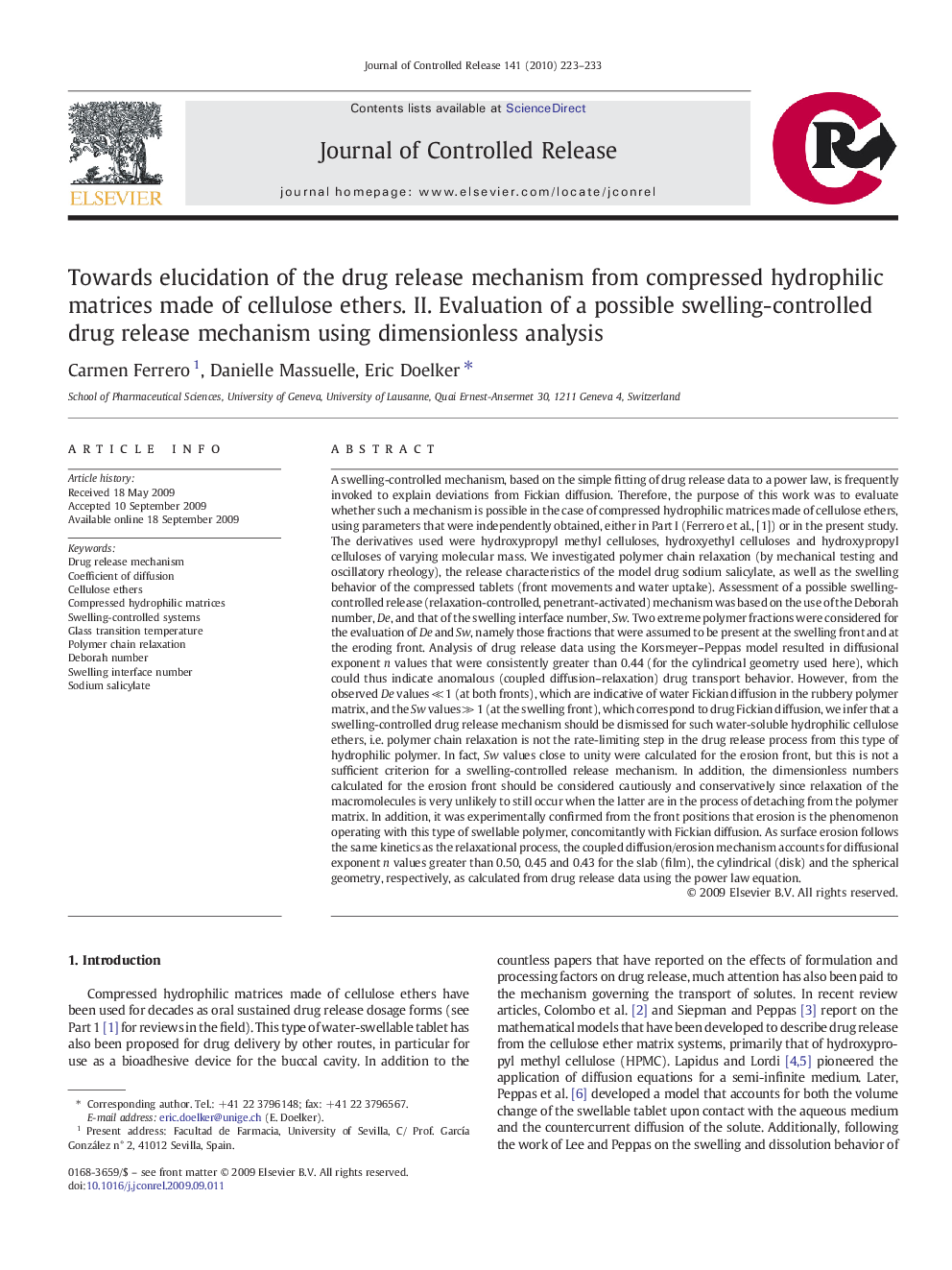| کد مقاله | کد نشریه | سال انتشار | مقاله انگلیسی | نسخه تمام متن |
|---|---|---|---|---|
| 1426019 | 986790 | 2010 | 11 صفحه PDF | دانلود رایگان |

A swelling-controlled mechanism, based on the simple fitting of drug release data to a power law, is frequently invoked to explain deviations from Fickian diffusion. Therefore, the purpose of this work was to evaluate whether such a mechanism is possible in the case of compressed hydrophilic matrices made of cellulose ethers, using parameters that were independently obtained, either in Part I (Ferrero et al., [1]) or in the present study. The derivatives used were hydroxypropyl methyl celluloses, hydroxyethyl celluloses and hydroxypropyl celluloses of varying molecular mass. We investigated polymer chain relaxation (by mechanical testing and oscillatory rheology), the release characteristics of the model drug sodium salicylate, as well as the swelling behavior of the compressed tablets (front movements and water uptake). Assessment of a possible swelling-controlled release (relaxation-controlled, penetrant-activated) mechanism was based on the use of the Deborah number, De, and that of the swelling interface number, Sw. Two extreme polymer fractions were considered for the evaluation of De and Sw, namely those fractions that were assumed to be present at the swelling front and at the eroding front. Analysis of drug release data using the Korsmeyer–Peppas model resulted in diffusional exponent n values that were consistently greater than 0.44 (for the cylindrical geometry used here), which could thus indicate anomalous (coupled diffusion–relaxation) drug transport behavior. However, from the observed De values ≪ 1 (at both fronts), which are indicative of water Fickian diffusion in the rubbery polymer matrix, and the Sw values ≫ 1 (at the swelling front), which correspond to drug Fickian diffusion, we infer that a swelling-controlled drug release mechanism should be dismissed for such water-soluble hydrophilic cellulose ethers, i.e. polymer chain relaxation is not the rate-limiting step in the drug release process from this type of hydrophilic polymer. In fact, Sw values close to unity were calculated for the erosion front, but this is not a sufficient criterion for a swelling-controlled release mechanism. In addition, the dimensionless numbers calculated for the erosion front should be considered cautiously and conservatively since relaxation of the macromolecules is very unlikely to still occur when the latter are in the process of detaching from the polymer matrix. In addition, it was experimentally confirmed from the front positions that erosion is the phenomenon operating with this type of swellable polymer, concomitantly with Fickian diffusion. As surface erosion follows the same kinetics as the relaxational process, the coupled diffusion/erosion mechanism accounts for diffusional exponent n values greater than 0.50, 0.45 and 0.43 for the slab (film), the cylindrical (disk) and the spherical geometry, respectively, as calculated from drug release data using the power law equation.
Graphical AbstractHPMC tablet after immersion in drug release medium: representation of the penetration front at rp, the transition (swelling) front at rtr, the diffusion front at rd, the original position of the matrix surface at r0, and the erosion front at re. The abscissa x is the distance along the matrix radius r.Figure optionsDownload as PowerPoint slide
Journal: Journal of Controlled Release - Volume 141, Issue 2, 25 January 2010, Pages 223–233